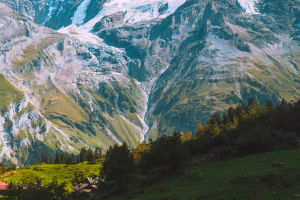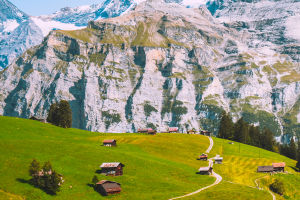Desert means sandy desertified land. One third of the earth's land area is desert. Because there is so little water, most people think the desert is desolate and lifeless, so it is called "barren sand".
Desert areas are mostly sandy beaches or dunes, often with rocks under the sand. The soil is thin and there are few plants. Some deserts are salt flats with no vegetation at all, and deserts are generally aeolian landforms.
Compared with other areas, there is not much life in the desert, but if you look closely, you will find that there are many animals hidden in the desert, especially the animals that come out at night.
There are also sometimes valuable deposits in deserts, because deserts have few inhabitants, making it easier to exploit resources.
This is the world of yellow sand, the ocean of yellow sand, where the continuous yellow sand meets the sky, can't imagine where the end of the sand is!
Do you know which are the top five deserts in the world?
1. The Sahara Desert.
Formed about 2.5 million years ago, the Sahara Desert is the largest desert in the world and the largest sandy desert in the world.
Located in northern Africa, it has very harsh climatic conditions and is one of the most inhospitable places on earth for living things.
Soils on the edge of deserts contain more concentrated organic matter. It is sparsely populated, with an average of less than 1 person per square kilometer. Mainly Arabs, followed by Berbers etc.
Residents and agricultural production are mainly distributed in the Nile Valley and oases, and some are mainly nomadic.
2. Arabian desert.
With an area of 2.33 million square kilometers, it is the second largest desert in the world.
The Arabian Desert is located on the eastern edge of the Sahara Desert in North Africa. Located in eastern Egypt, between the Nile Valley, the Suez Canal and the Red Sea.
3. Libyan desert.
Located in the northeastern part of the Sahara Desert. Including central and western Egypt and eastern Libya.
Deserts have rocky plateaus and rocky or sandy plains, and the climate is dry and uninhabitable.
4. Australian desert.
It is the largest desert in Australia and the fourth largest desert in the world. It consists of the Great Sand Desert, the Victoria Desert, the Gibson Desert and the Simpson Desert.
5. The Gobi Desert.
With an area of 1.3 million square kilometers, it is located between China and Mongolia. It is the northernmost desert in the world.
Here, underground springs flow continuously from rocks and sand dunes, and there are many saltwater lakes.
At first glance, there are dark yellow colors everywhere, not even a single tree. The vastness of the desert makes each of us feel tired, as if we will never be able to get out.


